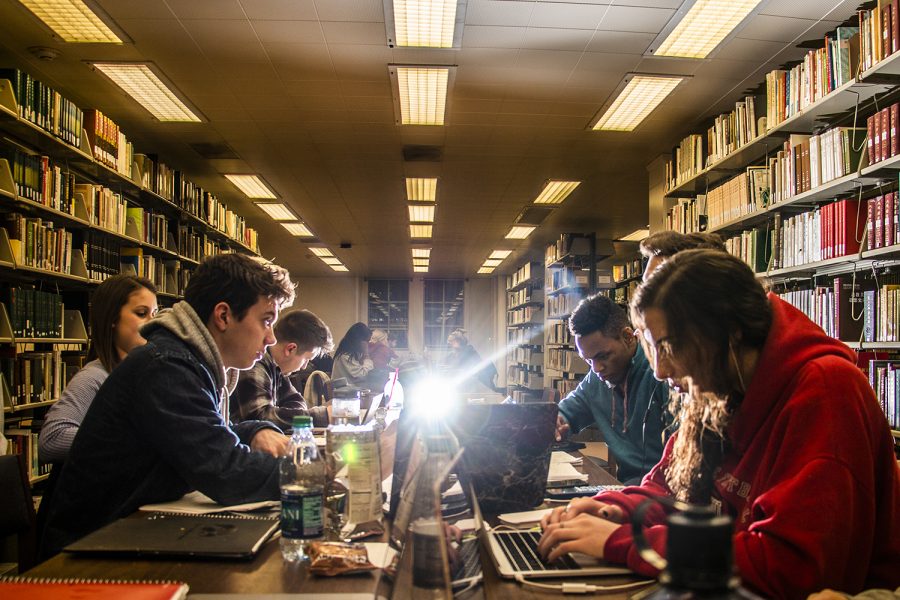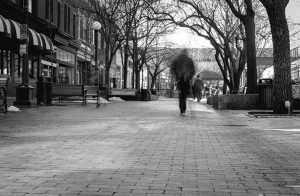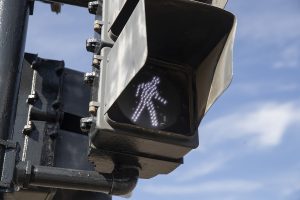Opinion: 6 bad studying strategies (and a good one)
Recognizing unhelpful study habits can be the first step in changing your ways.
Students study for their finals in the main library on Monday, December 10, 2018.
October 1, 2019
Midterm season is once again upon us, which means it’s time to study for exams. During my three years in college, I have noticed several ways my peers have chosen to review material for their classes. From coffee shops to crowded libraries, University of Iowa students are found hitting the books in every nook and cranny on campus, given there is caffeine available.
Taking an exam can be extremely stressful for college students. I have found that one of the most challenging components of taking an important test is finding the best way to study for it.
The Late Night Librarian
This student is an advocate for making the most out of the late-night hours the Main Library provides. Not only do they bring their books and notes to study, but they also come equipped with blankets and snacks to give the library a homier feel. This person can be found leaving their study session at 2 a.m. or whenever campus security decides to wake them up.
The Coffee Shop Counterfeit
This student invites a large group of their peers from class to Cortado to study the material that will be on their upcoming exam. However, despite the good intentions, the study session eventually disintegrates into a caffeinated stupor. Most valuable time is spent talking about upcoming weekend plans and very little actual studying is accomplished.
The Crammer
This student waits until the last few days (or hours) before the test before opening a single book. They often administer themselves a high dosage of caffeine and spend the precious minutes before the exam studying in their living room. Depending on the strength of the caffeine, they may or may not crash before test time.
The Artist
This student spends hours with their notebook open examining the material, designing the page with doodles and scribbles in lieu of relevant course material. However, what may look like studying consists mostly of highlighting note sections in varying shades of yellow and fuchsia.
The Social Media Scholar
This student hasn’t put their phone down since they got a smartphone. They refresh Instagram every 10 seconds and have their textbook splayed out in front of them. There is a good chance that this person will take a photo (or five) of them “studying” and send it to their Snapchat streaks. Much like the Coffee Shop Counterfeit, the social aspect of studying is more important to this person than vocabulary terms and formulas.
The Netflix Procrastinator
This student is a victim to binge-watching their favorite show. The attempts to study are rendered useless when they sit down at the computer. They may have a browser window opened that features the exam material, but their time is actually spent obsessively watching seven hours of The Great British Baking Show.
The Right Way
Although the previously mentioned ways to study can end up getting students a decent grade on their midterms out of pure luck, more often than not they can leave you feeling exhausted with a caffeine hangover.
The Princeton Review offers tried-and-true tips for college students hoping to succeed on their exams. They advocate cutting out distractions such as unnecessary screen time and studying a little bit every day.
Another helpful way to promise successful studying sessions is to maintain a normal sleep schedule. That means cutting out those midnight library outings and spending time getting some shut-eye instead.
In a recent study from the American Academy of Sleep Medicine, it is reported that one of the adverse effects of not getting enough sleep in college can include a lower GPA. Cutting back on the caffeine intake can be a good start to ensuring a full REM cycle and acing your midterms.
Taking exams are difficult — there is no way around that. However, students can find success by putting in hard work and maybe vetoing that fifth cup of coffee.
Columns reflect the opinions of the authors and are not necessarily those of the Editorial Board, The Daily Iowan, or other organizations in which the author may be involved.





